For thousands of years, the date palm was a staple crop. In the Kingdom of Judea it was a source of food, shelter, medicine, and shade. But the plant went extinct due to waves of conquest and intentional destruction. But now, after 2,000 years, the Judean date palm is back and the sweet ancient fruit has been harvested once again.
A Symbol of Good Fortune
Thick forests of the ancient date palms towering up to 80 feet (24.38 meters) and spreading for 7 miles (11.27) covered the Jordan River valley from the Sea of Galilee in the north to the shores of the Dead Sea in the south.
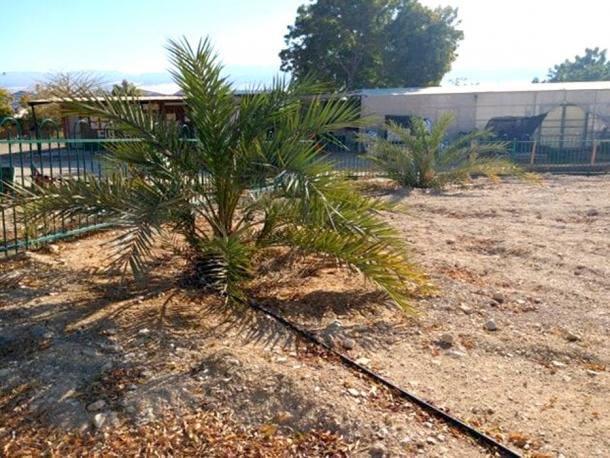
Ancient Judean date palm trees resurrected from ancient seeds. ( The Arava Institute for Environmental Studies )
So valued was the tree that it became recognized as a symbol of good fortune in Judea. It is chronicled in the Bible, Quran, and ancient literature for its diverse powers. It has allegedly served as both an aphrodisiac and a contraceptive, and as a cure for a wide range of health issues including cancer, malaria, and toothache.
The Demise of a Prized Tree
However, its value was also the source of its demise and eventual extinction. The tree so defined the local economy that it became a prime resource for the invading Roman army to destroy. Once the Roman Empire took control of the kingdom in 70 AD, the date palms were destroyed in an attempt to cripple the Jewish economy. The Romans eventually succeeded and by 500 AD the once plentiful date palm had almost completely disappeared, driven to extinction for the sake of conquest.
During the Byzantine and Arab periods (4th to 11th century AD) the Judean date palms were barely holding on and the continued waves of conquest and destruction meant “that by the 19th century, no traces of these historic plantations remained,” according to a study conducted about the trees in 2020.
Resurrecting Methuselah
But all was not lost, because in 1963, the late archeologist Yigael Yadin began excavating Masada, a mountaintop fortress built over 2,000 years ago on the shore of the Dead Sea, where King Herod built a spectacular palace. Masada was the last stand of a small band of Jewish rebels who held out against three Roman legions for several years before committing mass suicide in 73 AD.
Buried beneath the rubble, Yadin unearthed a small stockpile of seeds stowed in a clay jar dating back 2,000 years. For the next four decades, the ancient seeds were kept in a drawer at Tel Aviv’s Bar-Ilan University. But then, in 2005, botanical researcher Elaine Solowey decided to plant one and see what, if anything, would sprout.
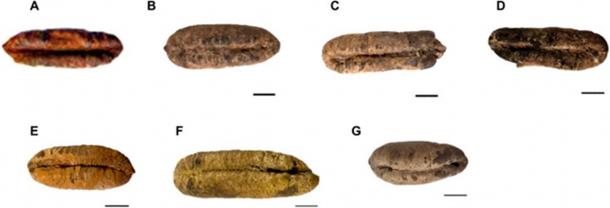
Morphology of six germinated ancient Judean date seeds before planting. (Guy Eisner / Sciencemag)
“I assumed the food in the seed would be no good after all that time. How could it be?” said Solowey. She was soon proven wrong. After eight weeks, a small green shoot emerged from one seed, producing a sapling no one had seen in centuries and becoming the oldest known tree seed to germinate. The plant was nicknamed “Methuselah,” after the longest-lived person in the Bible.
The Ancient Judean Date Palm Family Grows
The first leaves were plagued with white spots, which the researchers put down to insufficient nutrients, and it was thought that the plant would never survive. But as time progressed, the leaves began to look healthier.
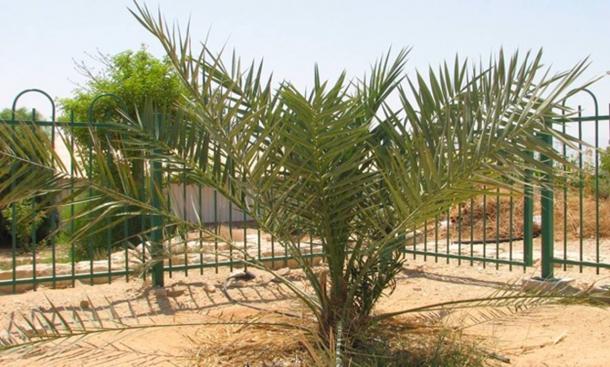
Younger Methuselah. ( Arava Institute for Environmental Studies )
In 2011, the plant produced its first flowers and today, the living archaeological treasure continues to grow and thrive. As soon as the ancient Judean date palm had grown into a tree, Ms. Solowey used genetic testing on it to confirm if it was indeed male and thus incapable of producing fruit. Methuselah is and for a long time researchers believed that this was the only Judean date palm they would ever see.
But Dr. Sarah Sallon of the Hadassah Hospital in Jerusalem began to look for more Judean date palm seeds and 30 of the ancient seeds were recovered from Qumran, the same location where the Dead Sea Scrolls were found in the desert.
Between 2011 and 2014 Ms. Solowey planted the seeds and six more have sprouted over the years. Like Methuselah, they have all been given Biblical names. These plants are called Adam, Jonah, Uriel, Boaz, Judith, and Hannah.
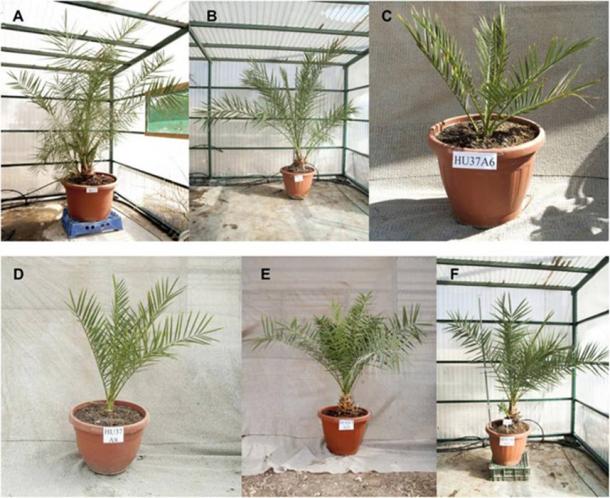
Germinated ancient Judean date seedlings. Ages in months at time of photograph (A to C) Adam (110 months), Jonah (63 months), and Uriel (54 months). (D to F) Boaz (54 months), Judith (47 months), and Hannah (88 months). (Guy Eisner / Sciencemag)
The age of the seeds range from some of the oldest germinated seeds in the world – Methuselah, Hannah, and Adam – with a carbon date to the first to fourth centuries BC, to the mid-second century BC to mid-first century AD plants known as Judith and Boaz, to the youngest of the Judean date palms – Uriel and Jonah are the youngest (first to second centuries AD).
Tasting the First Judean Date in 2,000 Years
After six years of growth Hannah flowered and researchers got excited at the possibility of resurrecting the Judean date after 2,000 years. Methuselah was chosen to father the fruit and pollen from his plant was placed onto Hannah’s flowers. The experiment worked. Interesting Engineering reports that “Recently, Hannah’s fruit was harvested for the first time.”
France’s University of Montpellier conducted genetic testing on the Judean date and found that it shares some qualities with the Iraqi Zahidi date as well as other date varieties that were once grown in ancient Mesopotamia, Arabia, and Pakistan.
The Judean dates harvested from Hannah have a light brown skin, fibrous and chewy honey-colored flesh, and is less sweet than the popular Medjool date.
A Place for Ancient Plants as Modern Cures?
Solowey has nurtured more than 100 rare or near-extinct species back to life as part of a 10-year project to study plants and herbs used as ancient cures. She has grown plants and herbs used in Tibetan, Chinese, and biblical medicine, as well as traditional folk remedies from other cultures to see whether their effectiveness can be scientifically proved. In experiments praised by the Dalai Lama, for example, Dr. Sarah Sallon has shown that ancient Tibetan cures for cardiovascular disease really do work.
Ancient sources have suggested that the Judean date palm tree had many unique medicinal properties no longer found in today’s palm varieties. “Dates were famous in antiquity for medicinal value,” said Solowey. “They were widely used for different kinds of diseases—cancers, TB [tuberculosis]—all kinds of problems.”
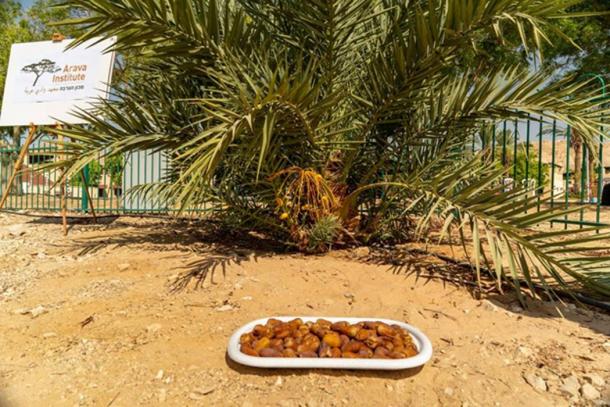
Harvested dates grown on the ancient Judean date palm. ( Marcos Schonholz )
Now that the Judean date palm has been brought back to life and its fruit has even been harvested, researchers finally have the opportunity to study if the ancient medicinal claims are true.
Top Image: Methuselah is a Judean date palm grown from a 2,000-year-old seed found at Masada. Source: Haaretz
Updated on September 15, 2020.
Related posts:
Views: 1
 RSS Feed
RSS Feed

















 September 18th, 2020
September 18th, 2020  Awake Goy
Awake Goy  Posted in
Posted in  Tags:
Tags: 

















Have and of the harvested dates been used to plant the children of Methuselah and Hannah? If so how are they doing?